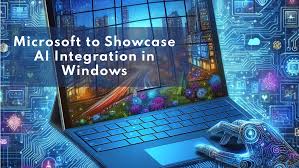Microsoft Prepares for the AI Revolution and Will Showcase the PC of the Future at Build 2024
Microsoft annual developer conference, Build 2024, is planned to begin on May 21 in Seattle. The event is very important this year because industry insiders are expecting a major reveal: Microsoft’s vision for the artificial intelligence (AI)-powered personal computer of the future.
Nicknamed “AI PCs,” this idea represents a dramatic change in the way we use our laptops and desktop computers. Microsoft is anticipated to present how Windows will serve as the operating system at the center of this change, slickly incorporating AI features into standard PC operations.
But what precisely does this mean? Although details won’t be revealed until the formal announcement, experts see a time when artificial intelligence (AI) will become an essential tool that will improve human capacities and streamline processes. Imagine image processing that enables real-time object manipulation and identification within documents, or speech recognition so sophisticated that it can record even the smallest subtleties.
The advantages could go much beyond necessities. Creative workflows could be completely transformed by AI-powered PCs that provide designers and artists with insightful recommendations. By using AI to automate tedious coding processes, developers may free up their time to concentrate on innovation.
The hardware developments that go hand in hand with Windows will determine this paradigm shift. With a specialized Neural Processing Unit (NPU) developed for managing AI workloads, Qualcomm’s Snapdragon X Elite CPU is anticipated to get the most attention. NPUs accelerate AI tasks without sacrificing overall system performance, which is a major benefit over conventional CPUs and GPUs.
To usher in this era of AI PCs, Microsoft must overcome a number of obstacles. It is vital to guarantee faultless functioning across a wide variety of hardware setups. It will also be necessary to successfully handle privacy and security issues pertaining to user data handled by AI systems.
In addition, there’s the issue of user uptake. Some people may be concerned about possible security issues, and others may not find AI integration to be a comfortable concept. By showcasing how AI improves user experience while upholding transparency and control over user data, Microsoft will need to overcome this distrust.
The implications of AI PCs may be significant in the long run. As processor manufacturers such as AMD and Intel enter the NPU race later this year with their own products, AI may find its way into every aspect of PC design. As programmers create apps that take advantage of on-device AI, this may spark a new wave of innovation in the software development industry.
The path for this fascinating new area should be revealed at the next Build conference. It remains to be seen if Microsoft’s vision lives up to the hype, but one thing is for sure: PCs are going to get more smarter in the near future.



